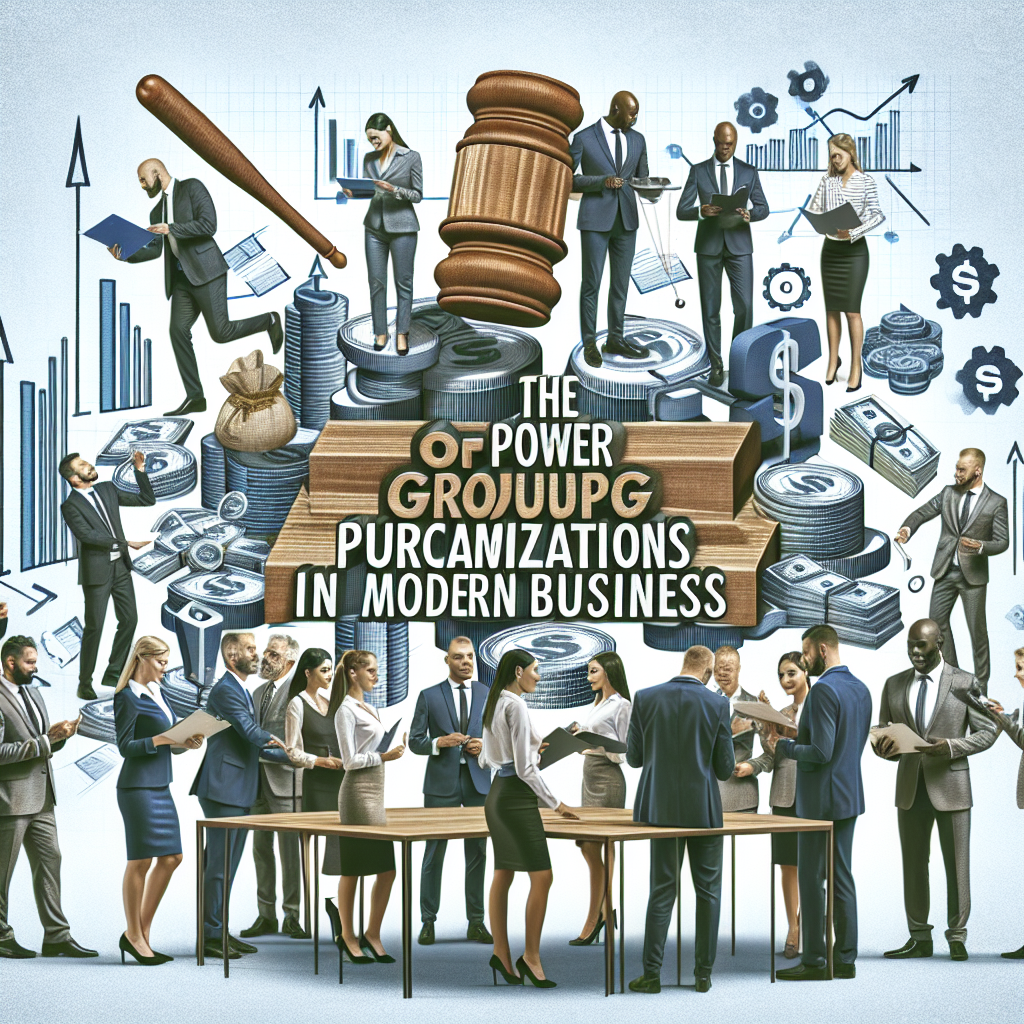Introduction
Effective vendor qualification processes are crucial for successful supplier management and procurement strategies. They help organizations identify reliable vendors that align with business goals, reduce risks, and maintain compliance. The significance of these processes cannot be overstated; they ensure that your supply chain remains robust, transparent, and efficient.
This article provides a comprehensive overview of vendor qualification processes, focusing on:
- The definition and purpose of vendor qualification
- Key components essential for thorough vetting
- Steps to compile a list of potential vendors
- The role of technology in streamlining these processes
The primary goals of effective vendor qualification include:
- Enhancing compliance with industry standards
- Mitigating risks associated with supplier relationships
- Ensuring quality and reliability in product/service delivery
Understanding these elements empowers organizations to make informed decisions, fostering sustainable partnerships that drive long-term success. Engaging in proper vendor qualification establishes a foundation for operational excellence while delivering value to stakeholders.
Moreover, leveraging drastic cost reduction through collective spend can significantly enhance the overall procurement strategy. This is particularly relevant for those starting their journey in the field, such as individuals exploring entry-level procurement jobs.
In addition, the power of continuous learning cannot be underestimated in procurement. As highlighted in Frank Corris’s transformative journey, mastering procurement through learning and adaptation can drive success. This concept is explored further in the article about purchasing as a life of learning and transformation.
Furthermore, effective vendor qualification not only helps in identifying the right suppliers but also plays a vital role in ensuring maximizing federal grant funding for nonprofits or boosting employee morale with break room supplies, depending on the nature of the business.
Understanding Vendor Qualification
Vendor qualification is a critical step in the procurement process. It involves evaluating and approving vendors to ensure they meet specific standards.
Purpose in Procurement
The vendor qualification process establishes reliable partnerships, minimizes risks associated with supplier failures, and ensures alignment with organizational goals. This is often part of a larger strategy that includes elements like strategic sourcing vs category management, which can further enhance the procurement process.
Importance for Compliance and Risk Management
Vendor qualification plays a vital role in maintaining compliance with regulations. It helps organizations assess financial stability through credit checks, verify necessary licenses and certifications, and identify potential risks by evaluating vendor history.
A thorough vendor qualification process not only safeguards your organization but also enhances operational efficiency. By focusing on these elements, you can build a robust supply chain that supports your business objectives effectively.
Moreover, adopting the right procurement software can significantly streamline this process. In times of crisis, it’s essential to have a resilient procurement strategy in place, as discussed in our article on procurement in crisis. Lastly, it’s important to dispel common misconceptions about purchasing processes, such as those related to Group Purchasing Organizations (GPOs), to make informed decisions.
Key Components of Vendor Qualification Processes
Vendor Qualification Checklist
A well-structured vendor qualification checklist serves as a foundational tool in the vendor qualification processes. It ensures that all relevant aspects of a potential vendor are thoroughly reviewed and assessed against client-defined standards. Essential items typically included in this checklist encompass:
- Company Information: Basic details such as the vendor’s legal name, address, and contact information.
- Business License Verification: Confirming that the vendor holds valid licenses to operate within their industry. This process protects your organization from potential legal issues by ensuring all selected vendors meet local, state, and federal regulations, which can be explored further in this licensing and certification guide.
- Credit Checks: Assessing the vendor’s financial stability through background checks and credit reports. This can help identify any potential risks associated with financial insolvency.
- Insurance Documentation: Ensuring that vendors carry adequate insurance coverage, including liability and indemnification agreements.
- References and Testimonials: Gathering feedback from previous clients to gauge reliability and service quality.
- Compliance Certifications: Verifying adherence to regulatory compliance standards specific to your industry, especially critical in sectors like life sciences.
The role of credit checks cannot be overstated. They not only reflect a vendor’s financial health but also provide insights into their payment history and overall business practices. A thorough credit assessment ensures that you partner only with vendors who demonstrate fiscal responsibility.
The importance of thorough vetting extends beyond mere compliance; it safeguards your organization against various risks, such as operational disruptions due to unqualified suppliers or non-compliance penalties. A comprehensive vendor qualification process helps create a solid foundation for successful procurement relationships.
In industries like life sciences, where ensuring compliance not only protects your organization but also upholds industry standards critical for product safety and efficacy, the stakes are notably higher due to stringent regulatory requirements. For instance, essential PPE for airborne precautions in healthcare is one such compliance aspect that must be strictly followed.
As you navigate through these processes, maintain an organized approach to documentation for easy access during audits or unexpected reviews. This proactive strategy supports ongoing compliance efforts while fostering strong partnerships with qualified vendors.
Moreover, when facing challenges like limited resources, it’s vital to embrace constraints, optimize processes, and leverage networks for business success. Such strategies can significantly enhance your procurement efficiency.
To further streamline your procurement process, it’s important to understand the key procurement terms that can better communicate its value within your organization. Additionally, understanding the difference between purchasing groups versus group purchasing organizations can provide insightful perspectives for future procurement strategies.
Lastly, if you’re considering a career in this field or looking to hire professionals such as procurement engineers
Supplier Qualification in Life Sciences
Supplier qualification in life sciences presents unique challenges that require meticulous attention to detail. Key factors include:
Regulatory Requirements
Compliance with industry regulations such as Good Manufacturing Practice (GMP) is crucial. Vendors must adhere to strict standards to ensure product safety and efficacy.
Audits
Frequent audits are necessary to verify compliance and quality assurance. This process ensures that vendors meet client-defined standards and can effectively contribute to the supply chain.
Evaluating capabilities in critical industries like pharmaceuticals involves several considerations:
- Vendor Assessment: Utilize a comprehensive checklist focusing on essential criteria for evaluating vendors, including quality control processes and delivery timelines. This process is vital for maximizing supplier performance which directly impacts the overall supply chain efficiency.
- Background Checks: Conduct thorough background checks to confirm vendor reliability and track record.
- Indemnification Agreements: Establish agreements that protect your organization from potential liabilities.
Importance lies in ensuring vendors possess adequate insurance and certifications, mitigating risks related to inefficiency. In life sciences, failure to maintain stringent vendor qualification processes can lead to significant repercussions, affecting patient safety and regulatory standing.
To effectively manage the procurement function, especially if it’s a one-person operation, consider implementing strategic solutions for cost efficiency and supplier management. Additionally, understanding tail spend management can help optimize costs further while maintaining quality. Moreover, fostering a strong supplier relationship management approach can significantly enhance vendor collaboration and performance. Lastly, adopting principles from frugal living could provide valuable insights into maximizing cost savings in daily operations.
Process Steps in Vendor Qualification
Compiling Candidates
Vendor qualification processes begin with a crucial step: compiling candidates. This process involves identifying potential vendors who can meet your requirements definition and operational needs. Effective strategies for sourcing suppliers include:
- Networking: Engage with industry contacts, attend trade shows, and participate in conferences to discover reputable vendors.
- Online Research: Utilize platforms like LinkedIn, industry directories, and online marketplaces to identify potential suppliers.
- Referrals: Seek recommendations from other businesses or industry organizations that have experience with vendors in your sector.
The importance of diversity in supplier selection cannot be overstated. A diverse supplier base enhances innovation and brings different perspectives to your procurement processes. Consider the following benefits of incorporating diverse suppliers:
- Enhanced Innovation: Diverse vendors often introduce unique solutions, fostering creativity and problem-solving.
- Market Reach: Engaging with a variety of suppliers can help you tap into new markets and customer segments.
- Community Support: Partnering with small or minority-owned businesses contributes to local economies and demonstrates social responsibility.
When compiling candidates, it is essential to assess their alignment with your organizational values and goals. This evaluation should consider factors such as the vendor’s track record, financial stability, and compliance with relevant regulations.
Creating a vendor shortlist based on these criteria enables you to streamline the qualification process. Establishing clear communication channels during this stage is critical for gathering necessary information effectively.
This structured approach to candidate selection lays the foundation for subsequent steps in vendor qualification, ensuring that you engage with suppliers who not only meet your operational needs but also align with your strategic objectives.
Assessing Capabilities
Evaluating vendor capabilities is essential to ensure alignment with operational needs and organizational goals. This process includes:
- Defining Requirements: Clearly outline specific needs for vendors. Understanding your requirements helps narrow down candidate selection.
- Performance Metrics: Utilize quantitative benchmarks to assess potential suppliers. Key performance indicators (KPIs) may include delivery times, quality compliance, and customer service responsiveness.
- Site Audits: Conducting on-site evaluations provides insight into a vendor’s operational processes. This hands-on assessment verifies that vendors can meet your expectations regarding quality and reliability.
By systematically analyzing these components, you can effectively gauge each vendor’s ability to fulfill your business objectives. Ultimately, thorough capability assessments are crucial in the vendor qualification processes, ensuring you partner with suppliers who not only meet but exceed your standards.
Regular Requalification
Regular evaluations are essential for maintaining compliance and quality standards in vendor qualification processes. The following factors contribute to an effective requalification process:
- Requirements Definition: Clearly define your operational needs to ensure vendors align with organizational goals.
- Ongoing Assessment: Implement continuous assessments of vendor performance against established metrics. This helps in identifying any gaps or areas needing improvement.
- Candidate Selection: Review and update criteria for sourcing suppliers based on evolving business requirements.
Aligning vendor capabilities with organizational goals not only enhances supplier relationships but also fosters a culture of accountability. Regularly revisiting these components ensures that your vendor base remains compliant, capable, and aligned with the strategic objectives of your organization.
Technology in Vendor Qualification Processes
Adopting technology in vendor qualification processes can significantly enhance efficiency and accuracy. Key benefits include:
- Streamlined Operations: Automation reduces manual tasks, allowing teams to focus on strategic decision-making.
- Improved Tracking Systems: Real-time monitoring of vendor performance and compliance helps maintain standards effectively.
- Data Management: Centralized databases enable easy access to vendor information, reducing the risk of errors.
Several software solutions facilitate automation in vendor qualification:
- Vendor Management Systems (VMS): Tools like SAP Ariba or Coupa provide comprehensive platforms for managing vendor relationships and qualifications.
- Compliance Tracking Software: Solutions such as ComplianceQuest help ensure vendors meet necessary regulations and standards.
- Document Management Systems: Platforms like DocuWare streamline document storage and retrieval, supporting audit readiness.
By integrating these technologies, organizations can enhance their vendor qualification processes, ensuring compliance and mitigating risks efficiently. Additionally, leveraging exclusive membership benefits, such as those offered at HubZoneDepot, can further optimize these processes by providing access to valuable resources and tools.
Documentation and Compliance
Keeping detailed records throughout the vendor qualification process is crucial for compliance reasons. Having thorough documentation allows organizations to prove that they are following industry regulations and their own internal policies. Here are some key things to focus on:
1. Audit Trails
Having a clear audit trail means that every step of the vendor qualification process is tracked. This transparency is extremely important during audits and can make the evaluation process much easier.
2. Easy Access
Making sure that documentation is easily accessible during audits enables teams to respond quickly to inquiries. This efficiency can help avoid delays and potential compliance problems.
Good record-keeping not only helps meet regulatory requirements but also improves the overall fairness of the vendor selection process. By prioritizing the importance of documentation, organizations can build stronger partnerships with vendors while reducing risks related to non-compliance.
Best Practices for Effective Vendor Qualification
1. Clear Communication
Establishing open lines of communication among teams involved in vendor qualification is crucial. This includes transparent supplier communication which helps in building trust and driving business growth.
2. Collaboration
Encouraging collaborative efforts ensures that all stakeholders are aligned on objectives and criteria for vendor selection.
3. Regular Updates
Frequent updates among team members foster transparency, allowing for timely adjustments in strategy or approach based on collective insights.
4. Stakeholder Engagement
Involving key stakeholders from various departments—such as procurement, finance, and compliance—enhances the effectiveness of the vendor qualification process.
5. Feedback Mechanism
Implementing a structured feedback mechanism can help identify challenges and streamline processes.
Emphasizing these practices cultivates a robust vendor qualification framework, ultimately leading to improved compliance, reduced risk, and stronger supplier relationships.
FAQs (Frequently Asked Questions)
What is vendor qualification and why is it important?
Vendor qualification is the process of evaluating and approving suppliers to ensure they meet specific standards and requirements. It is crucial for compliance, risk management, and maintaining quality in procurement processes.
What are the key components of a vendor qualification process?
Key components include vendor assessment, client-defined standards, regulatory compliance, background checks, credit checks, business license verification, and indemnification agreements. A comprehensive checklist can help ensure all aspects are covered.
How does technology enhance vendor qualification processes?
Technology improves vendor qualification through software solutions that automate processes, track performance metrics, and maintain documentation. Automation streamlines tasks and enhances efficiency in managing vendor relationships.
What should be included in a vendor qualification checklist?
A vendor qualification checklist should include essential items such as background checks, credit checks, business license verification, compliance with regulations, and indemnification agreements to ensure thorough vetting of potential vendors.
Why is regular requalification necessary?
Regular requalification is essential to maintain compliance with evolving standards and regulations. Ongoing assessments help ensure that vendors continue to meet operational needs and quality expectations over time.
What are best practices for effective vendor qualification?
Best practices include clear communication among stakeholders involved in the process, collaboration across teams, thorough documentation for compliance purposes, and utilizing technology to streamline operations and improve tracking.





